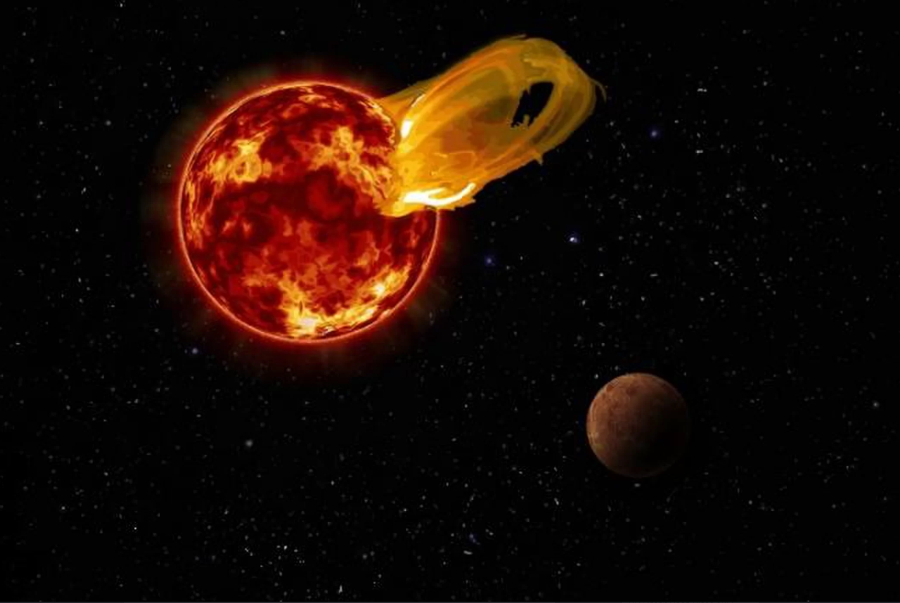
On August 31, 2012 a long filament of solar material that had been hovering in the sun’s atmosphere, the corona, erupted out into space at 4:36 p.m. EDT. The coronal mass ejection, or CME, traveled at over 900 miles per second – This file is licensed under the Creative Commons Attribution 2.0 Generic license.
The sun simmered red as it slunk towards the jagged horizon. Herman Pope and Krista Hubbard stood watching it from the parking lot at the Houston Space Center anticipating their last day on Earth.
“When will the Object reach perihelion?” The twenty-eight year old systems engineer grasped the older gentleman’s hand without taking her gaze off of the sunset.
The fifty-five year old senior operations manager looked at his watch, which had been his father’s before his. “Less than thirty minutes.”
“That’s how long we have?”
“Maybe. Are you sure you don’t want to go back inside? The Argonaut is transmitting continual status updates.”
“Round trip communications between here and Mercury’s orbit is something like 13 minutes.”
“If it happens, we won’t feel the effects for a while.”
“Yeah, but my brother in Hawaii won’t be having a good day. He’s supposed to graduate from college there next month.”
“Come on, Krista.” He gently tugged on her arm.
“No.” She pulled back harder than she had to. “I want to stay out here.”

